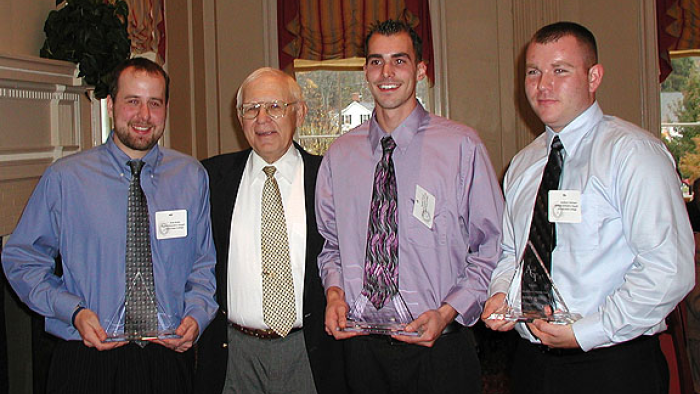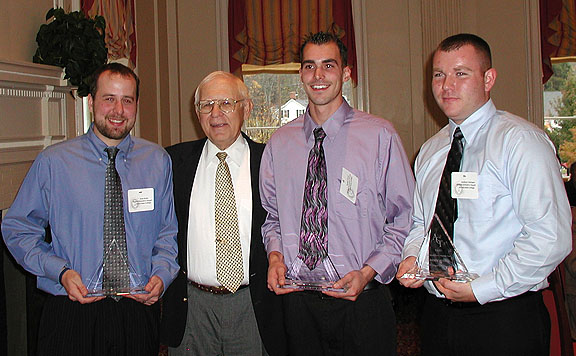
At a glance
 The Association of Council Members and College Trustees (ACT) of State University of New York (SUNY) has notified Alfred State College that a group of five students has captured the Student Initiative Awards for Region I in its annual ACT for Student Initiative Award.
The Association of Council Members and College Trustees (ACT) of State University of New York (SUNY) has notified Alfred State College that a group of five students has captured the Student Initiative Awards for Region I in its annual ACT for Student Initiative Award.

 The Association of Council Members and College Trustees (ACT) of State University of New York (SUNY) has notified Alfred State College that a group of five students has captured the Student Initiative Awards for Region I in its annual ACT for Student Initiative Award.
The Association of Council Members and College Trustees (ACT) of State University of New York (SUNY) has notified Alfred State College that a group of five students has captured the Student Initiative Awards for Region I in its annual ACT for Student Initiative Award.
ASC students Andrew Litzinger, Walworth; Dave Paryz, Derby; Aaron Horning, Webster; Sean Kelly, Almond and Wheeling, WV; and Robert Assad, East Aurora, worked with Assistant Professor Jeffrey Stevens, Electrician, Computer and Robotics Technician Department, on a project for the United States National Arboretum (USNA), located in Washington, DC, administered by the U.S. Department of Agriculture’s (USDA) Agricultural Research Service. The USNA consists of over 400 acres of both garden and forested land where botanical research is conducted. The site is just over five miles from the White House, in the heart of Washington.
The project involved the design and installation of a 1 Kw Photovoltaic (PV, solar electric) system with battery storage.
At the time of the project’s conception, late fall of 2008, these freshmen were in their 14th week of classes. When first approached, the students’ knowledge of PV systems was very limited; however, they had each expressed interest in PV.
Stevens explained to the students that he would be teaching them about the technology and that they would each be charged with three tasks: work together as a team to learn the principles and concepts of the technology; design a system to provide the required energy to supply power to the nursery within a specific budget (a budget of less than that allotted for connection to the USNA grid-powered system); and prepare lessons to teach the technology to the workshops’ participants. The team of students agreed to all three challenges and they started preparing for the project the next day.
The system designed by the students collects solar energy from the sun, stores it, and then converts it into utility (grid) quality 120 Volt AC energy. This energy powers an owner-provided irrigation control module linked to a satellite high above the earth. This entire system provides needed irrigation to a field where tree growth patterns are studied from within an urban environment. This system, now in use at the US National Arboretum, was designed while the five students maintained a full academic course load.
The team was able to complete the project, from concept to installation, in four months.
The team enlisted the assistance of students enrolled in other curriculums and departments on the campus, including the Building Trades departments to help in the design of enclosures, the battery box, and even the concrete foundation upon which the entire battery storage bank rests. The team engineered and partially built the PV system at the Alfred State campus; they then disassembled and transported it over 300 miles to the USNA, a location none of them had been to previously.
Each student demonstrated leadership and excellence as he worked together with the workshops’ participants to reassemble and install the system within a five-day window, ASC’s spring recess. Each day, the students arrived at the job site, long before any of the workshop participants, to prepare and layout for the project needs. Daily, the team would split into groups. Two team members would travel the early morning traffic of Washington to locate missing or broken parts. Two other team members would prepare the site and layout components for the workshops’ participants. Finally, the fifth man would prepare to stand alongside with Stevens in front of the classroom, where together they would teach the workshops participants.
These freshman students overcame any trepidation they might have felt about teaching classes comprised of tradesman, contractors, and engineers from whom they might seek employment in another year. The work these students produced not only met, but exceeded, the customers’ expectations.
As a result of their efforts, Alfred State has been invited to assist in another project of greater scope.
“The honor and pride I feel for these men cannot be put into words,” says Stevens, “for what greater reward can a teacher receive but to have been able to work alongside of his students, as equals in the industry, showcasing their skills and training beyond the walls of the classroom.”
